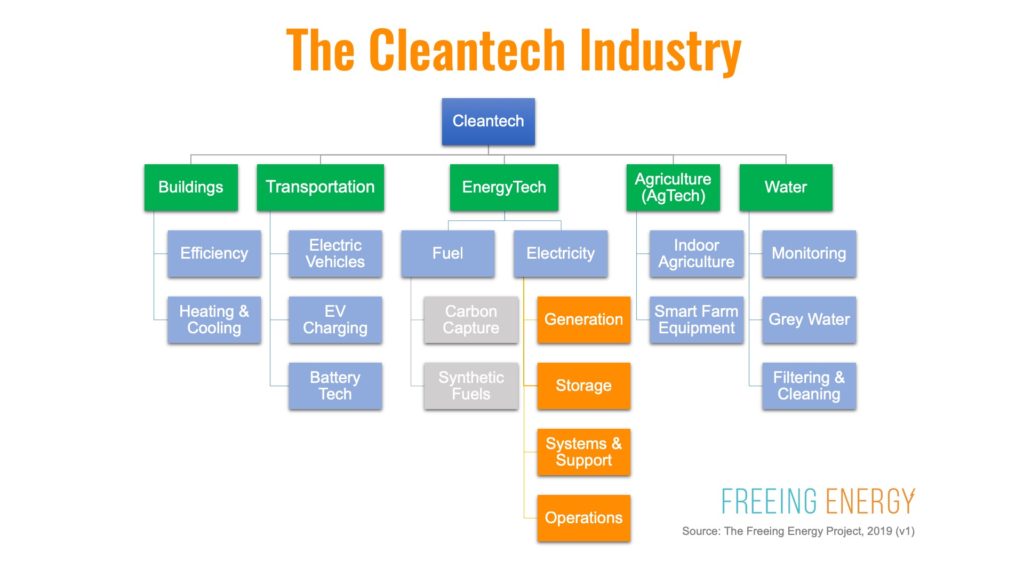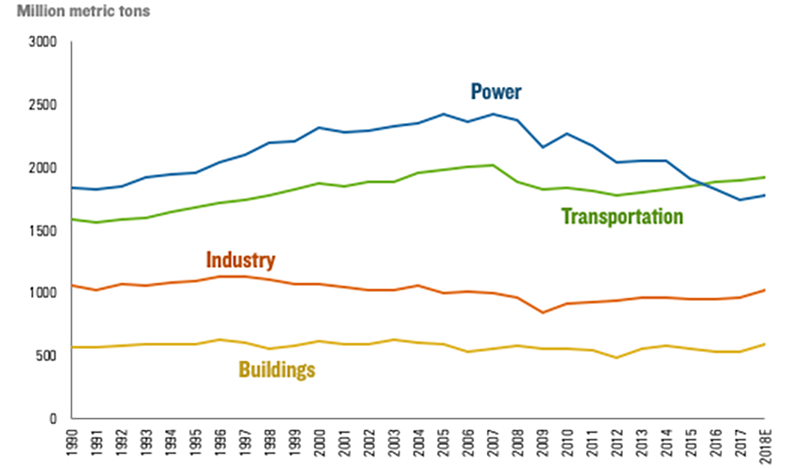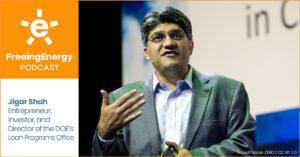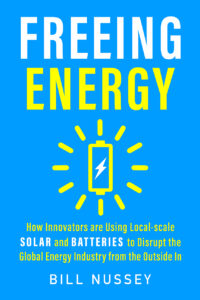This is the third in our series on financing the clean energy transformation. The first part explores the cleantech bubble of 2011. The second part asks, How are we going to fund the clean energy future? In this third part, we’ll take a look at the major segments within cleantech and show where clean energy fits in.
A definition: what exactly is cleantech?
It wasn’t long ago that the term “cleantech” was most commonly heard at dry cleaning industry conferences. But, with a world increasingly focused on sustainability, the term has shifted to describe environmentally focused businesses. In particular, Wikipedia defines “cleantech” as
… any process, product, or service that reduces negative environmental impacts through energy efficiency, the sustainable use of resources, or environmental protection activities.
But this is more than sustainability for its own sake. The “tech” part of “cleantech” implies disruptive solutions and lower costs. It also implies the high-growth characteristics that attract venture capitalists and other early-stage, higher-risk investors.
The popularity of the “cleantech” term can be traced back to Nick Parker and Keith Raab in 2002, with the launch of their banking and advisory firm, The Cleantech Group. (“Cleantech” is also used interchangeably with “clean technology” and “Greentech”)
Cleantech in five digestible pieces

While there are many ways to slice up the pizza, cleantech basically breaks down into five categories:
- Transportation: electric vehicles (EVs), EV charging, and battery storage.
- Buildings: energy efficiency like LEDs, insulation, and improved HVAC.
- Agriculture (AgTech): indoor agriculture, smart farms, and plant science (more).
- Water: Greywater treatment, monitoring, and filtering (more).
- Energy (energytech): fuels and electricity.
GET MONTHLY NEWS & ANALYSIS
Unsubscribe anytime. We will never sell your email or spam you.
Drilling down into the fuel side of Energytech
Over the last decade, energy has received the majority of attention and investment dollars. The fuel side of energy includes its own subsegments:
- Synthetic fuels: creating fuels from solar, thermal, or biologic mechanisms. Examples include algae to oil, recycled plastics to oil, and solar to hydrogen.
- Carbon capture: removing carbon dioxide from fuel combustion processes or directly from the air. Examples include: sequestering CO2 underground, capturing CO2 from advanced combustion cycles, and finding commercial applications for excess CO2.
Powertech, the 800-pound gorilla
Electricity-related investments are the largest segment of energytech investing. There are four segments, with the last one, Operations, having three subsegments:
- Generation: solar and wind power, geothermal, and many others. Nuclear is often included in this segment, too.
- Storage: batteries, mechanical storage, and long duration storage.
- Systems: hardware and software systems that enable the next generation of clean, distributed grid. This includes areas like microgrids, EV charging, and inverters.
- Operations -> Financing: providing the capital to build companies and infrastructure. It includes marketplaces, crowdsourcing, and pay-as-you-go (for low-income regions of the world).
- Operations -> Optimization: demand response, peak shaving, analytics, and wind turbine management. This partially overlaps with buildings and microgrids.
- Operations -> Maintenance: analytics, drones, predictive maintenance, etc. This is also referred to as “operations and maintenance” or “O&M”.
What are the biggest opportunities for reducing CO2?
Reducing CO2 is a key goal for cleantech. This chart from the Rhodium Group gives a sense for the trends and relative contributions from several major industries.

The Freeing Energy Perspective
In his widely read book, Energy and Civilization, Vaclav Smil makes the case that capturing and utilizing energy has propelled humanity forward more than any other idea or technology. Energy is the foundation of nearly every part of our modern society. The coming decade will see more change than the industry has seen in a century. The opportunities for investors are enormous.
The fuel-side of energytech has lagged electricity but that may change. Rising concern over CO2 emissions has pushed governments around the world to explore “carbon pricing”. This can take the form of “cap and trade” and the more politically charged “carbon tax”. As more governments embrace this, fuel-based energytech revenue and investing will skyrocket.
Meanwhile, the Freeing Energy Project focuses almost entirely on powertech, the electricity part of cleantech. The reasons are simple. The power industry has been sheltered by government-granted monopolies for over a century. The lack of competition has slowed innovation and left the industry decades behind others in terms of digital technology, new business models, and dynamic marketplaces.
A host of new technologies and business models are conspiring to upgrade the power industry. It’s likely these changes will come so fast that the regulators and current leaders can’t keep up. A full-blown disruption will result and the scale of impact may be larger than almost any industry before it.
Epilogue: during my research, I was surprised how little had been written on segmenting cleantech. So, I did it myself. I welcome feedback, suggestions, and debate.




3 Responses
Bill.
Fuel cells don’t get a mention in your chart, and you have previously said that they are too expensive. I’m sure that you remember when solar was too expensive. A household must use about as much energy as a forklift, and there are fleets of forklifts, running on hydrogen fuel cells, methane fuel cells, and methanol fuel cells. If fuel cells are already economical for forklifts, how can they be too expensive for you to consider?
Admittedly, fuel cells don’t fit easily into your chart, since they would appear in Buildings, Transportation, and Energy Tech.
Newt
Cleantech, Greentech, Bluetech all are sustainable activities that impact the environment – air, land, water; energy; cost; advanced precision, and safety. Advanced materials processing using lasers is not mentioned. The scientific research using light to vaporize corrosion, paint, dirt, and other debris is integrated with autonomous robotics, work cells, automated assembly lines, etc. However, funding sources are limited to assist US entreprenuers to be successful with implementing change and acceptance of these advanced machine tools.
An exciting new opportunity:
A revolutionary method for generating clean and affordable energy using compressed air.
I want to tell about an innovative breakthrough in energy production that promises to revolutionize the way we power our world: the use of compressed air.
Imagine a way of producing energy that is not only incredibly economical, but also environmentally sustainable, offering a renewable energy source that does not deplete our precious resources. This is exactly what our new compressed air technology is aimed at.
Using the energy of compressed air, we have developed a method that allows us to produce electricity at minimal cost compared to traditional methods. This approach promises to provide exceptionally cheap electricity, which opens up countless opportunities for economic growth and development.
One of the most remarkable aspects of this method is its versatility. It can be easily integrated into various industries, including manufacturing, agriculture and transportation, providing a reliable source of energy wherever needed. Using compressed air energy are almost limitless.
Perhaps the most significant advantage of this method is its harmonious connection with nature. Unlike traditional energy generation processes, which require limited resources and lead to harmful emissions, our technology works in harmony with the environment. It takes resources from nature, converts it into electricity, and then returns it to nature without any changes. In fact, it serves as a conductor of natural energy, contributing to its transformation into a usable form while maintaining an ecological balance.
Some research needs to be done to improve the characteristics of the method and start mass production of devices.
I invite Investors, interested in innovative opportunities to explore the huge potential of using compressed air energy. By investing in this innovative technology, you not only earn substantial profits, but also contribute to the development of sustainable energy solutions that benefit our planet and future generations.
I would be happy to discuss this possibility with Investors and provide additional information about our technology. Together, we can begin the path to a greener and more prosperous future based on clean and affordable energy.
Thank you for considering this wonderful opportunity.
With warm wishes,
Karen Grigoryan
Tel. +37493204400